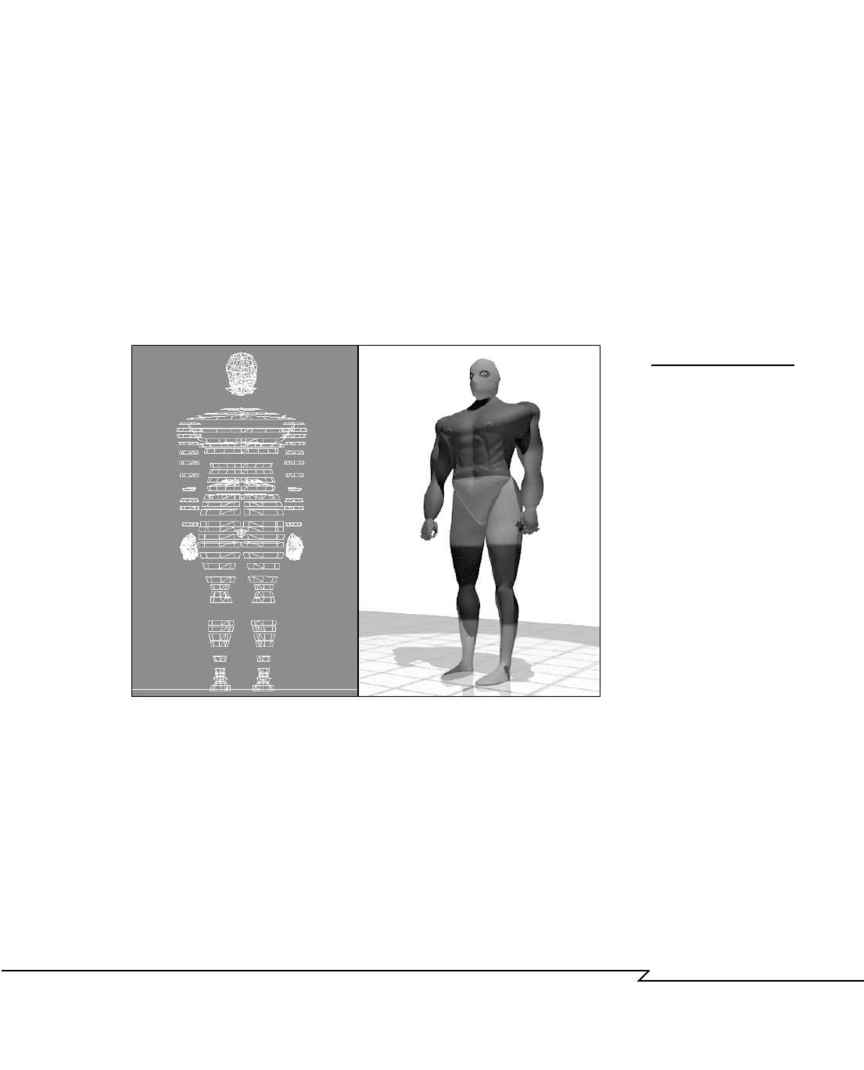Cre@teOnline - The Web Designer's Bible CH04 Page 23

Skinning
For those of us without the time or patience for the vertex-by-vertex
method, most 3D programs offer some software-assisted options. One such
method of creating humanoid and sculptural forms involves using the
skinning technique discussed in Chapter 3, "Modeling Basics." If you cre-
ate a number of cross-sections of the figure, applying a skin results in a
smooth, nearly seamless model (see Figure 4.20). Of course, designing and
adjusting the cross-sections takes a lot of care and experimentation, espe-
cially if your program requires that all cross-sections have the same num-
ber of vertices.
C
H A P T E R
4 : M
O D E L I N G
: B
E Y O N D
T H E
B
A S I C S
169
F
IGURE
4.20
Example of a skinned
figure: (a) The cross-
sections defining the
figure may be polylines,
splines, or 3D objects,
depending on the pro-
gram. (b) The skinning
process connects the
cross-sections with a sur-
face mesh, which can
be virtually seamless
depending on the
methodology and limits
of the software.
(a)
(b)
One caution about trying to use this method for articulated human faces,
however: Because it produces polygons that are laid out like a grid, it's less
than ideal for faces because of the ways in which they need to be deformed
around the mouth and eyes to create expressions. Generally, artists tend to
create faces with polygons arranged radially around those spots.
Metaballs
Metaballs is a form of modeling in which you build forms out of various-
sized spheres. The software blends the spheres together into a single mass.
04 2433_CH04 8/23/02 8:34 AM Page 169
